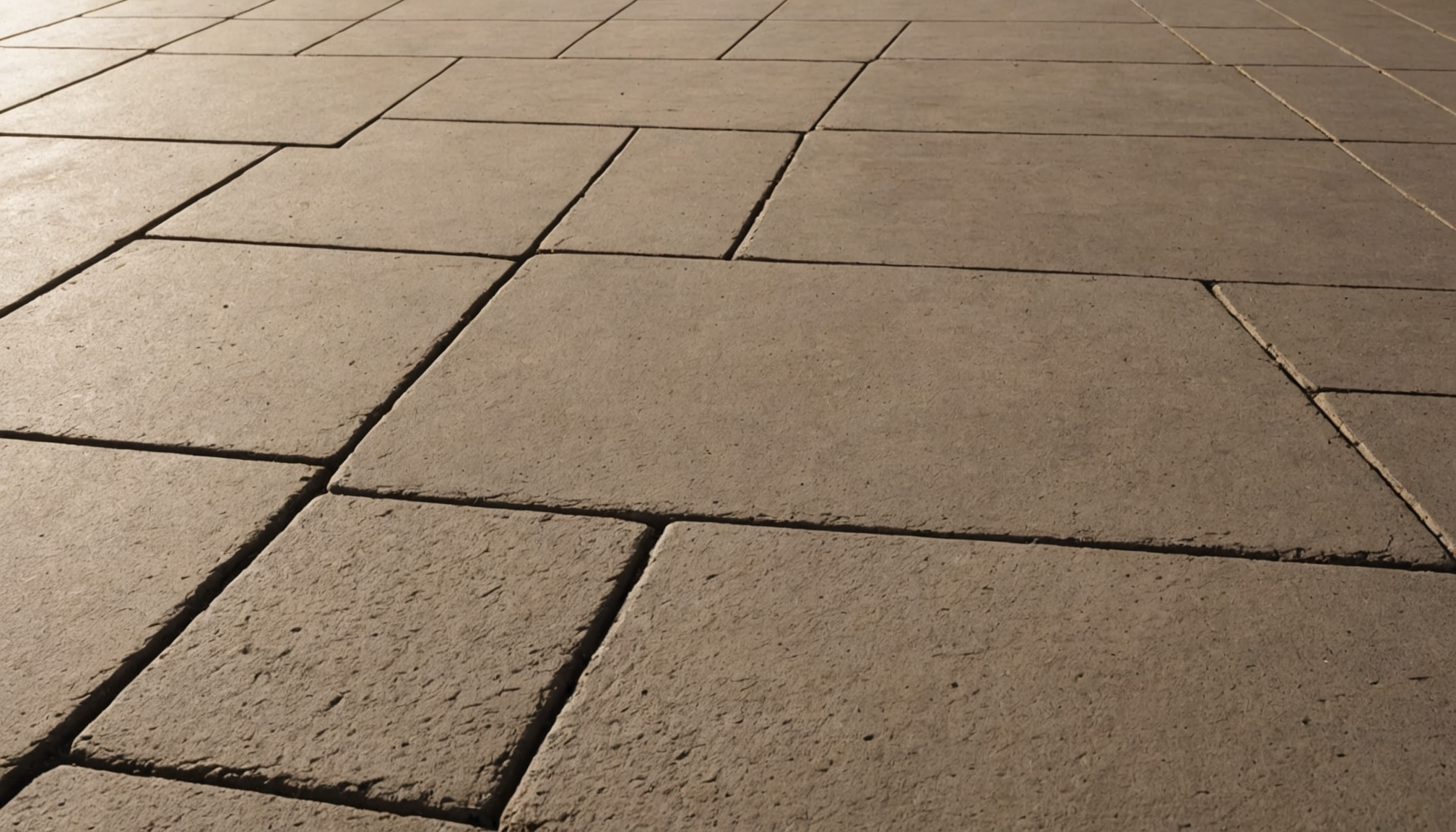Before diving into any patio remodel, it is crucial to start with a comprehensive assessment of your current space. This step lays the foundation for a successful transformation, ensuring that the final design aligns with your needs and enhances the overall functionality of your outdoor area.
Begin by evaluating the size and shape of your patio. Measure all dimensions carefully, including any adjacent features like a garage or nearby garden areas. Understanding the layout will help you determine what is feasible within the confines of your space and will assist in deciding on elements you can incorporate or might need to alter.
Next, consider the existing condition of your patio infrastructure. Examine surfaces for wear and tear, such as cracked concrete, loose pavers, or untreated wood. This inspection will highlight areas that require immediate attention or ongoing maintenance once the remodel is complete. Addressing these issues early on can prevent future hassles and contribute to a longer-lasting outdoor area.
Assess the current usage of your patio. Reflect on how your family currently engages with the space and think about how you would like to use it in the future. Do you envision it as a serene retreat, a social hub for entertaining, or a versatile area with elements of both? This introspection will guide your decision-making process, helping prioritize features and functionalities that fit your lifestyle.
If the process feels overwhelming, consider hiring pros to assist with the assessment. Experts can provide valuable insights and suggest solutions that you might not have considered. They can also anticipate potential challenges and recommend creative ways to maximize your space effectively.
An analysis of your patio’s current exposure to sun, wind, and weather conditions will further inform your choices. The amount of sunlight your patio receives and prevailing winds are crucial factors in selecting materials and deciding on the layout and orientation of various elements, ensuring comfort and a prolonged lifecycle for your remodel.
To better understand and organize your findings, here is a simple comparison table to aid in outlining the critical points of your current patio assessment:
| Aspect | Current Status | Considerations for Remodel |
| Size and Shape | Rectangular, 300 sq ft | Potential for built-in seating or planters along perimeter |
| Surface Condition | Cracked pavers | Replace with new pavers or switch to concrete for durability |
| Usage | Occasional dining | Expand for more seating or dedicated dining section |
| Exposure | Partial sunlight, moderate wind | Add windbreaks or shade solutions like pergolas |
By taking the time to carefully assess your current patio, you set a strong groundwork for a remodel that not only transforms your outdoor space but does so in a way that matches your vision and practical needs. It’s this blend of aspirational and functional planning that will ultimately result in a patio that brings joy for years to come.
selecting durable materials
When choosing materials for your patio remodel, durability should be a top priority. Selecting the right materials will not only enhance the aesthetic appeal of your outdoor space but also ensure longevity and reduce the need for maintenance. Follow these steps to make an informed decision:
- Evaluate Your Climate: Before you start choosing materials, take note of your area’s climate conditions. For regions with heavy rainfall, opt for water-resistant materials like sealed stones or concrete. In hotter climates, materials that resist heat absorption, such as light-colored tiles or stones, prevent the surface from becoming too hot to walk on comfortably.
- Understand Material Options: Familiarize yourself with the basic materials used in patio construction. Some popular choices include:
- Concrete: Known for its durability and versatility, it can be stained or textured to mimic more expensive materials.
- Natural Stone: Offers a beautiful, organic look with options like flagstone, slate, and bluestone. Though pricier, the aesthetic appeal is unrivaled.
- Pavers: Available in various colors and styles, pavers are modular, making them easy to replace if damaged.
- Wood: Provides a warm feel but requires regular maintenance to prevent rot and insect damage.
- Consider Maintenance Needs: Your choice will impact the level of maintenance required. For a low-maintenance patio, consider options like stamped concrete or composite pavers, which resist staining and require minimal care. Natural stones and wood, on the other hand, tend to demand more attention to keep them looking their best.
- Budget Wisely: Set a realistic budget that balances the cost of materials with the cost of installation and potential ongoing maintenance. While some premium materials have a higher upfront cost, they might save you money on maintenance in the long run.
- Think About Safety: Your patio should be safe for all users, including children and the elderly. Select materials that offer non-slip surfaces even when wet, such as textured pavers or aggregate concrete.
- Plan for Future Changes: Keep in mind that your usage of the patio may change over the years. Choose materials that offer flexibility for future redesigns or expansions, allowing you to easily update your space without extensive renovation.
- Consult with Professionals: When in doubt, hiring pros can be invaluable. They bring expertise in suggesting materials that suit your specific needs and environment, and can identify potential issues before they arise.
Choosing durable materials is an investment in reducing long-term maintenance and preserving the aesthetic and functional integrity of your patio, so take your time to research and select the best options for your remodel.
incorporating comfortable seating
When crafting an inviting outdoor space, ensuring comfortable seating is paramount to creating a patio that is both functional and enjoyable. The right seating can transform your patio into a preferred retreat, encouraging relaxation and fostering social connections. Here are crucial considerations to ensure your seating delivers both comfort and style.
Start by assessing the expected use of your patio. Will it be a cozy corner for intimate conversations, or a lively venue for hosting gatherings? Understanding this will guide the type, amount, and arrangement of seating you incorporate. For smaller gatherings, a couple of plush armchairs or a loveseat might suffice, whereas larger parties may require modular seating solutions that can be adjusted or expanded.
Comfort should be at the forefront of your choices. This can be achieved by selecting seats with ample cushioning and supportive backrests. Cushions made from weather-resistant materials like solution-dyed acrylic retain color and resist mildew, reducing maintenance efforts while ensuring longevity. Look for removable cushion covers that are easy to clean, ensuring long-lasting freshness and appeal. Deep-seated lounge chairs or sofas promote relaxation, inviting family and friends to unwind for hours.
For a versatile aesthetic that seamlessly ties together various elements of your patio, consider incorporating a mix of seating options, such as wicker chairs, benches, and chaise lounges. Wicker is lightweight yet durable, making it easy to move and rearrange while also adding texture and an organic feel to your space. Pairing different types of seating allows you to cater to diverse preferences and create differentiated zones on your patio.
Material selection is crucial not only for comfort but also for the longevity of your seating pieces. Materials like teak and aluminum offer durability and minimal maintenance, essential for withstanding changing weather conditions. Teak, for instance, ages beautifully, developing a soft, silvery patina, while aluminum is resistant to rust, making both excellent choices for outdoor furniture.
Ergonomics is another aspect that shouldn’t be overlooked. Seating should not only be visually appealing but also support good posture. Armrests should offer a comfortable height, and chairs should allow your feet to rest flat on the ground. Consider adjustable options or cultivating a variety of heights for more tailored comfort.
Don’t forget to factor in storage solutions for your seating elements, especially during harsh weather conditions or the off-season. Stackable or foldable chairs are convenient for storage and free up space when not in use. Alternatively, hiring pros to suggest practical storage solutions, such as outdoor furniture covers or a storage bench, can protect your investment.
Ultimately, investing in comfortable seating enhances your patio, making it a welcoming environment and a testament to thoughtful design. Whether melting into a plush lounger with a good book or gathering with friends for lively conversation, your seating choices are pivotal in converting your outdoor area into a cherished retreat.
enhancing with lighting
As you embark on your patio remodel, lighting is an essential element that can dramatically enhance the atmosphere and functionality of your outdoor space. Thoughtful lighting transforms your patio into a versatile area, allowing for extended hours of enjoyment and creating a warm, inviting ambiance.
Start by considering the various types of activities you intend to support on your patio. Whether it’s cozy family dinners, lively parties, or peaceful evenings alone with a book, the right lighting setup will cater to these needs. Task lighting, such as hanging pendant lights or strategically placed spotlights, can illuminate specific areas like dining zones or outdoor kitchens, ensuring safety and practicality.
Ambient lighting sets the mood and establishes a welcoming environment. String lights are a popular choice for their enchanting, twinkling effect, while lanterns or wall-mounted fixtures add an elegant touch. These options not only enhance the visual appeal but also serve as charming decorative elements that reflect your personal style.
For homeowners with pergolas or gazebos, integrating recessed lights can provide subtle yet effective illumination. These are particularly useful if your patio remodel involves complex structures or focal points, helping to highlight architectural details and providing an upscale look.
Don’t forget about the power of accent lighting to bring out specific features of your patio. Consider using LED strips along pathways or under railings for a guided, modern feel. Uplighting trees or other landscaping elements can create dramatic shadows and layers, adding depth and intrigue to the space. This type of lighting can be particularly useful if your patio borders a garden area, enhancing its beauty even after the sun has set.
It’s crucial to select fixtures that are designed for outdoor use to withstand the elements and require minimal maintenance. Opt for weather-resistant materials, such as stainless steel or copper, that can endure moisture and temperature fluctuations, ensuring longevity and reducing long-term upkeep.
Energy efficiency is another key consideration. LEDs are an excellent choice for outdoor lighting, as they offer considerable energy savings and boast an impressive lifespan. Consider solar-powered options for pathways or deck lighting, which are both eco-friendly and cost-effective.
Finally, hiring pros to help with your lighting design can lead to insightful decisions that maximize your space’s potential. Professionals can offer expertise in optimizing light placement and address any technical challenges, ensuring your lighting not only meets aesthetic goals but also complies with safety standards.
Integrating well-planned lighting into your patio remodel not only enhances its beauty and usability but also increases the value and enjoyment of your entire home. As you dream up your perfect outdoor retreat, remember that the right illumination can transform and enrich your space, offering delight long into the evening hours.
adding personal touches
When it comes to remodeling your patio, incorporating personal touches can transform a standard outdoor area into a unique expression of your personal style and creativity. The goal is to blend elements that reflect your personality while enhancing the functionality and aesthetic of your space.
Begin by selecting art and décor that resonate with your taste. Consider using weather-resistant artwork or sculptures to add a focal point to your patio. Outdoor rugs, available in various colors and patterns, can define different zones on your patio and infuse the space with warmth and individuality. When choosing materials, focus on those requiring minimal maintenance, allowing your personal touches to retain their charm throughout the seasons.
Plants and greenery are another way to inject personal flair into your patio remodel. Opt for potted plants of varying heights and textures to create a lush, dynamic atmosphere. For those with a green thumb, a small herb garden or flower bed can be both functional and decorative, offering fresh ingredients for outdoor cooking or fragrant blooms. Ensure your choices align with your patio’s climate and sun exposure to minimize upkeep.
Incorporating handmade items or family heirlooms adds sentimental value to your outdoor haven. Repurpose an old wooden ladder as a plant stand, or utilize an antique trunk as a coffee table. These unique touches not only personalize your space but also create conversations about your patio’s origins and inspirations.
Installing a custom feature, such as a fire pit or water fountain, can serve as a centerpiece and gathering spot. Fire pits provide warmth during cooler evenings, extending the usability of your patio, while the soothing sound of a water fountain can establish a tranquil environment, perfect for relaxation or reflection. By hiring pros, you can ensure these installations are both safe and professionally executed, allowing for seamless integration into your patio design.
Lighting also plays a crucial role in personalizing your space. Select fixtures that reflect your style, whether minimalist, bohemian, or rustic. Personalized lighting choices, like colored bulbs or lanterns with intricate designs, can accentuate your décor elements and create a cohesive look, even after the sun sets.
Additionally, custom-built furniture offers not only comfort but also bespoke design. Tailor seating and tables to complement the existing architecture of your home or to stand out as bold highlights on your patio. Matching or contrasting colors, along with varied textures, allow for greater personalization and a space that resonates with you.
By focusing on personal touches, you transform your patio into an outdoor haven that is distinctively yours, offering comfort, beauty, and function in equal measure. This is ultimately where your creative vision meets practical design, enabling you to craft a retreat that truly feels like home.
To sum up, remodeling your patio combines strategic planning with personal creativity to rejuvenate your outdoor space. From selecting durable materials to adding personalized accents, each step enhances functionality, resilience, and charm. By incorporating comfortable seating and thoughtful lighting, your patio becomes an inviting oasis for relaxation and entertainment. Embrace each phase of the remodel with imagination and care, ensuring every feature reflects your vision and meets your needs, cultivating a beautiful outdoor sanctuary that will be enjoyed for years to come.


